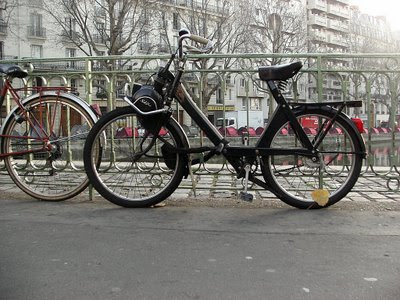
Can you imagine drinking pure spring water straight from the tap? Well, that’s what we do here in Grenoble – we also shower in it, brush our teeth with it and do the washing up in it. The water comes from a spring - la source de Rochefort – which bubbles up between the Mount Rochefort and the river Drac, south of the town and is filtered naturally through a hundred metres or so of alluvial deposits. The reservoir lies in a protected zone of nearly 3000 hectares – a beautiful nature reserve where house construction, industry and the use of pesticides is forbidden but walking through forest glades and observing the flora and fauna is actively encouraged. And while Grenoble water is untreated, the rest of France is having to drink something reminiscent of their local swimming pool on a crowded Saturday afternoon because the Ministry of Health has intentionally over-chlorinated the water supply in case terrorists contaminate it with botulism. The sensible people of Grenoble were not having any of this nonsense and refused the treatment – besides, any terrorist wanting to contaminate this water supply would have to be pretty good at orienteering and cross country running…
 Grenoble Daily Photo
Grenoble Daily PhotoThe French are the world’s second biggest consumers of bottled water (the Italians are the first). The average person gets through 124 litres a year, which is about a bottle and a half a week. We British manage just 14 litres a year – and most of that is probably drunk in one go on the same morning-after-the-New-Year’s-Eve-party. Mineral water – eau minérale – offers health-giving properties that are recognised by law. This means that strict rules are enforced at the site of the spring, as the quality has to be consistent. The water must come from a single source - of which there are 1,200 in France – and temperature, mineral content, taste and visual appearance are monitored closely to ensure they do not vary. Although I am usually suspicious of what I would term fanciful cures, I admit that I have gulped down several litres of a well-known mineral water in my time, which is supposed to help you slim by acting as a diuretic. I know full well this is nonsense. What it really means is that you go to the loo five times an hour and pay for the privilege – you could get the same results with a gallon of tea and a couple of fig rolls. Nevertheless, it is high in calcium so it is good for your bones. Other mineral waters make different claims. Vichy water is good for your complexion (you have to drink it, not wash in it), Hépar water is good for your nerves and fizzy water like Salvetat is good for the digestion. A well-known manufacturer of slimming products has even brought out a ‘zero calorie’ water…and yes, I thought it was a joke too but I’ve seen people buy it...

I’ve always believed water to be a pretty boring element but in fact it’s good for all sorts of things. Spa towns (named after the Belgian town of Spa) have been around since Roman times and have fallen in and out of popularity ever since. You no longer have to be a wealthy aristocrat to take the waters – the doctor can prescribe a three-week cure and the Sécurité Sociale will reimburse you. In Uriage-les-Bains, a thermal resort a few miles into the mountains around Grenoble, you can treat your eczema, sinusitis or rheumatism just by taking a bath. It is something to do with sulphur and arsenic, says the brochure reassuringly. You can also drink the water, have it injected or get pulverised with it – an experience similar to being set on by riot police with water cannons. My rheumatic mother-in-law has been on a cure twice and each time she has come back exhausted and aching all over but adamant that it has done her the world of good.
She's probably right. But I still think the best use for water is to make a Nice Cup of Tea which, as we all know, cures everything. So I'll just go and pop the kettle on...











